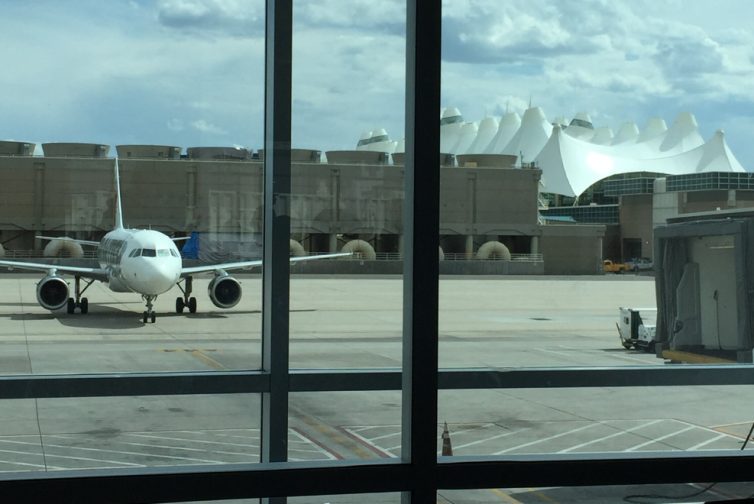
My Frontier chariot arrives DEN – Photo: Kevin Horn
During the year 2016, my partner and were living 1,200 miles apart. We wanted to spend as much time together as possible without missing work or going bankrupt in the process. We needed to take advantage of every chance we came across to spend as much time together as we could. As it turned out, we learned very quickly the ups and downs of this jet-setting lifestyle through lots of flights on low- and ultra-low-cost carriers (LCC and ULCC, respectively). The ULCC business model is not without its share of controversy, but if they weren’t available for us, our year wouldn’t have been nearly as great as it turned out to be.
My partner Natalie and I met in early 2015 while I was stationed at Wright Patterson Air Force Base in Dayton, Ohio. I was nearing the end of my assignment to earn a Master’s degree with a follow-on assignment to Colorado Springs as an instructor at the U.S. Air Force Academy. Natalie was in the middle of a five-year PhD in Clinical Psychology. Through shared passions for adventure and fitness, we hit it off immediately but we also knew that my move to Colorado would be tough. We started traveling to see each other in the fall of 2015, and developed a rhythm of visiting every three weeks or so. These visits were great and fueled both of our passions for travel and adventure. As winter came, we knew we wanted to spend even more time together despite being so far apart during the week.

Back and forth quite a bit – Image: GCMap
For the new year 2016, we set the ambitious goal of seeing each other every other weekend for the entire year. We had two major travel seasons coinciding with the spring and fall semesters of her program. We planned to spend the summer together which would provide a break from the hectic flight schedule and allow time for the bank account and credit card point balances to recharge. With the plan set, we went about attacking a personal travel schedule busier than either of us had ever done before.

Zodiac calls this the Fusio. Image: Zodiac Aerospace.
A couple of days ago at ITB in Berlin, Qatar Airways announced that they were finally going to do something about their aircraft not configured with the B/E Super Diamond or even the humble B/E Diamond (AKA their 777 fleet). Instead, they announced that they were also going to replace the amazing B/E Super Diamonds on their 787, A350, and A380 as well. Whatever they were going to do was described as a product rivaling first class. Thanks to Alan Joyce at Qantas, who describes the Thompson Vantage XL as a “mini-first class” my hopes were damped. A few days before ITB, I discovered some curious images on Zodiac’s website (above).

B/E Super Diamond business class seat on the Qatar A350 – Photo: Blaine Nickeson | AirlineReporter
Now, I know some people have said that B/E Aerospace is the supplier of what Qatar is installing. They might be right, and Qatar hasn’t said. It did give me a starting point to imagine what Qatar was actually doing.
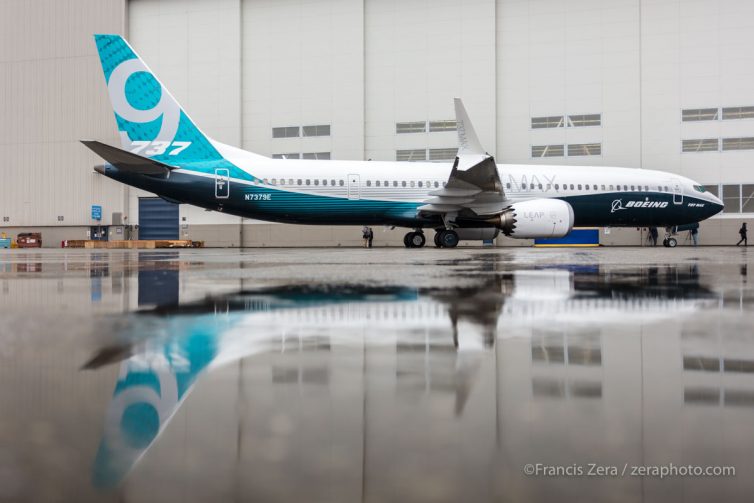
Boeing’s latest addition to the 737 MAX lineup at its debut at the Renton assembly plant
Boeing’s revamped 737 lineup has gained even more forward momentum as the second iteration of the MAX series made a rainy-day debut this morning at Boeing’s Renton, Wash., assembly plant.
-
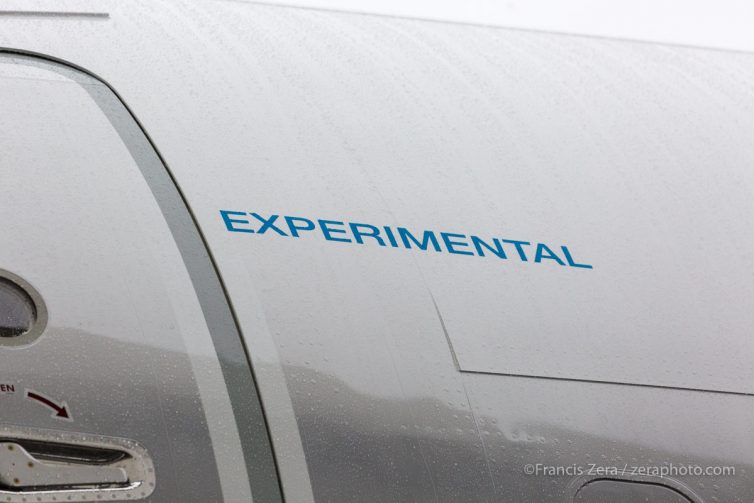
-
The FAA requires test aircraft to display the word “experimental” prominently near the boarding doors
-

-
LED landing lights are all the rage these days
-
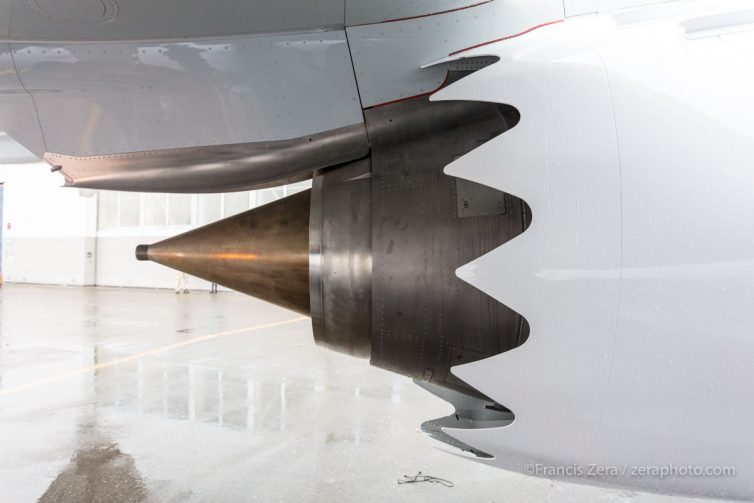
-
The scalloped nacelles on the CFM LEAP 1-B engines are similar to those on the 787 and are designed to reduce operating noise
-
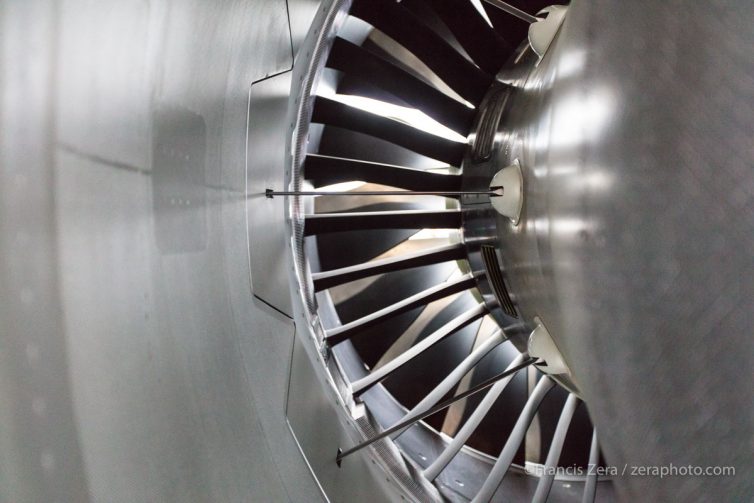
-
A peek at the innards of the CFM LEAP 1-B engines
With a maximum capacity of 220 passengers (in a very tight configuration) and a range of 3,515 nautical miles, the new single-aisle plane is roughly nine feet longer than the 737 MAX 8, which is expected to receive FAA certification in advance of its commercial debut in the coming months.
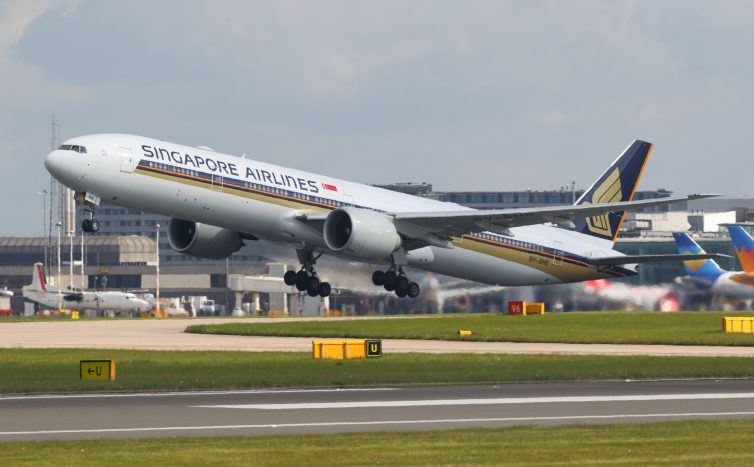
A Singapore Airlines Boeing 777-300ER – Photo: Aero Pixels | FlickrCC
In February, 2017, I had the opportunity to fly business class on Singapore Airlines from Los Angeles to Tokyo/Narita. As luck would have it, I was on a Boeing 777 that had recently been retrofitted with Singapore’s new business class product. I took a few photos to share the experience.
In 2014, I flew on Singapore’s previous 777 business class product and wrote a review. The new seats are a big improvement.
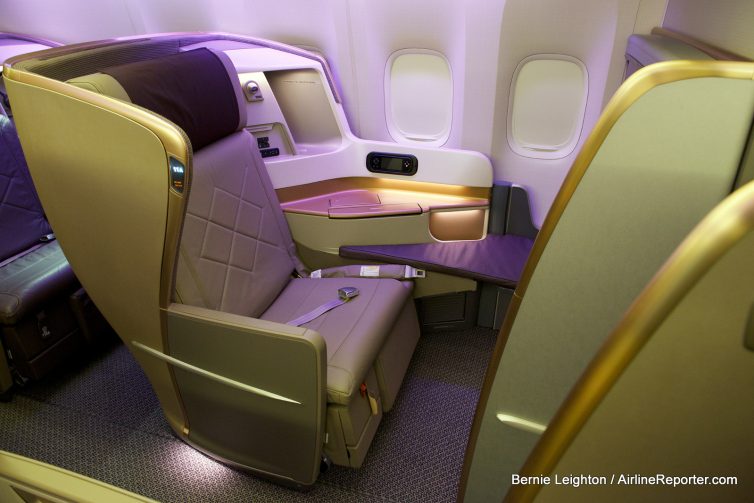
The business class product
Check-In & LAX Star Alliance Lounge
Check-in at the Singapore Airlines ticket counter was fast and friendly. Security lines at 6:45 am were short.
After surviving the TSA, I immediately directed my attention to breakfast at the Star Alliance Lounge. Located on the 5th floor, the lounge is quite large. The area is filled with dining tables, couches, and comfortable chairs. A variety of breakfast foods were offered including a cereal bar, quiche, scrambled eggs, danish, bagels, and assorted breakfast meats (with and without pork). A nice selection of fresh fruit and cheese was also available.
Drink selections were numerous. My first stop was the espresso machine, which makes a mean latte. I had two to make sure I was ready for the 11-hour flight. No sleeping with a window seat!
For photos and a full review of the LAX Star Alliance Lounge, see the 2013 AirlineReporter post.
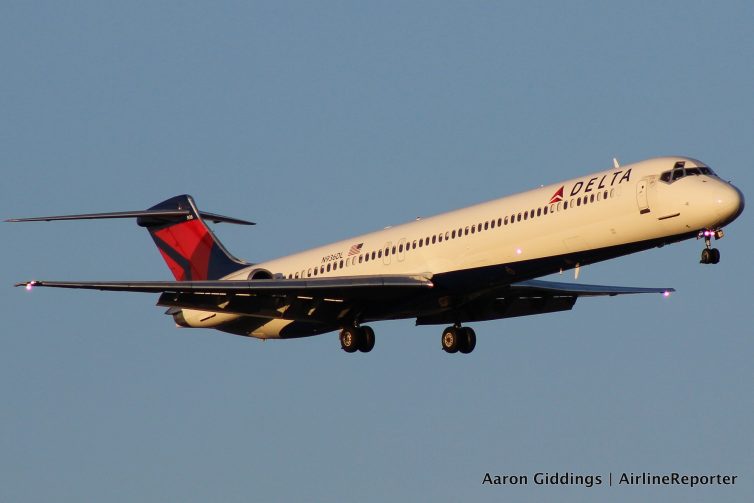
Delta MD-90
I’m not a particularly frequent flier. In fact, aside from a brief job hunting period in 2015 that saw me leaving SEA for a different destination each week for three weeks straight, I haven’t flown on commercial airliners more than twice a year ever. With that in mind, it was an interesting contrast when I booked my Delta Air Lines tickets for PAX South (a video game fan convention) with a route of FSD-MSP-ATL-SAT in economy to get there, and SAT-MSP-FSD in first class on the way home.
My trip planning had been determined by two main factors. The first was that the outbound routing gave me two legs on the MD-90. I love the DC-9 aircraft family, and will happily grab any opportunity to fly on them, particularly as they’re becoming increasingly rare in the fleets of major carriers. The second factor was my returning connection. When I booked my flight, I was only going to have a forty-five-minute layover in Minneapolis. I hoped that booking myself into seat 1A would ensure that I could make my connection, no matter how many terminals apart my two flights were.











